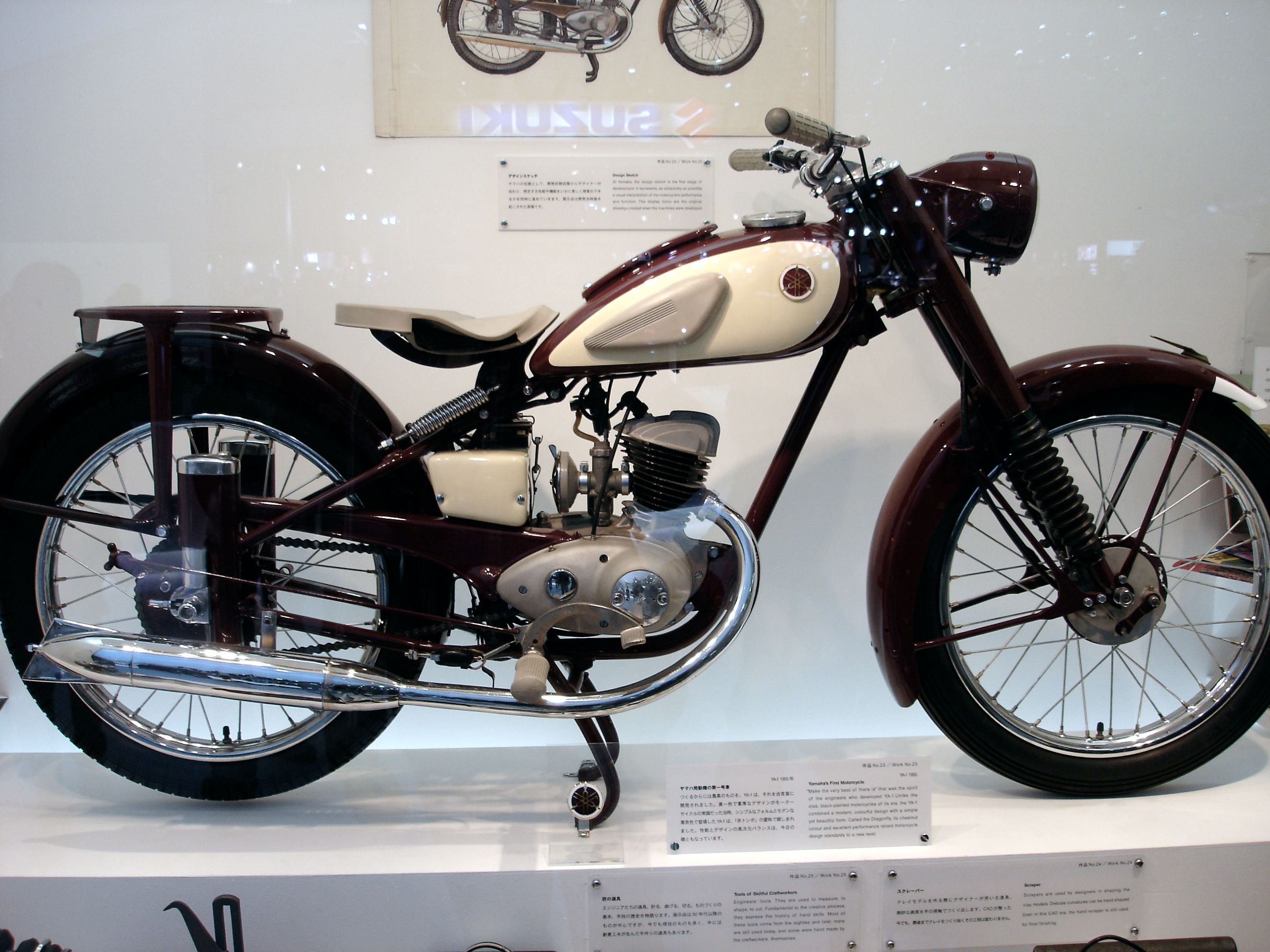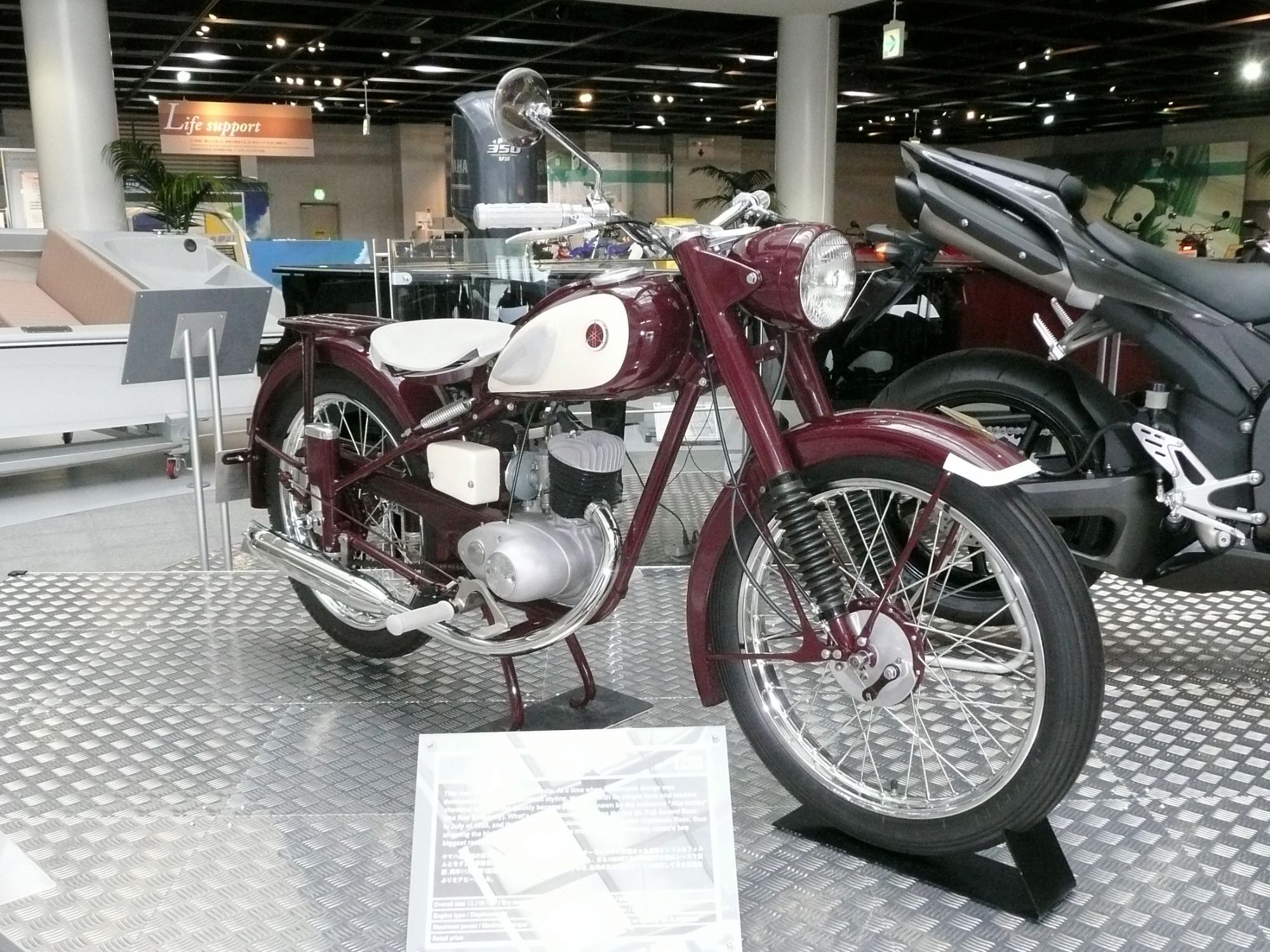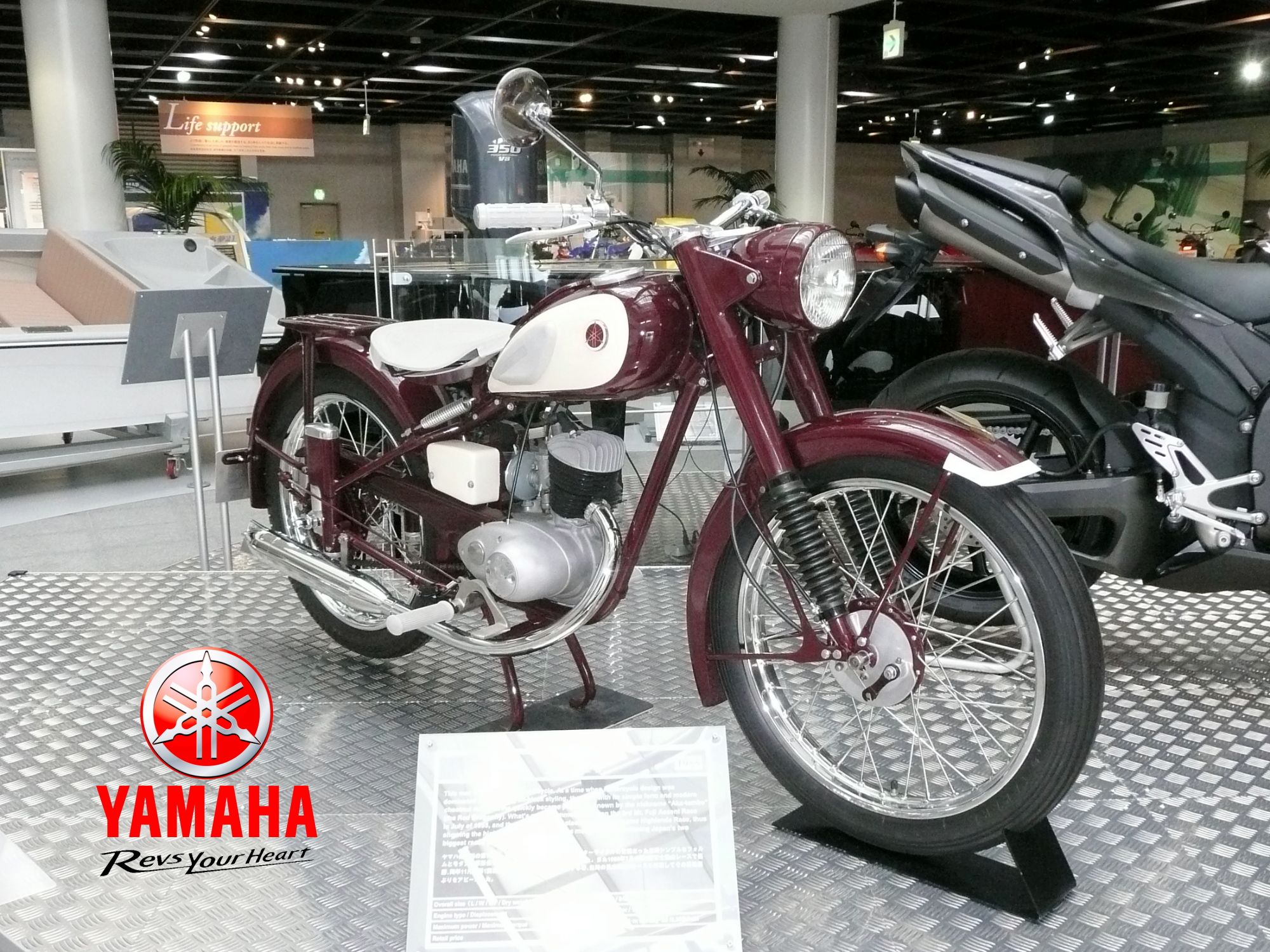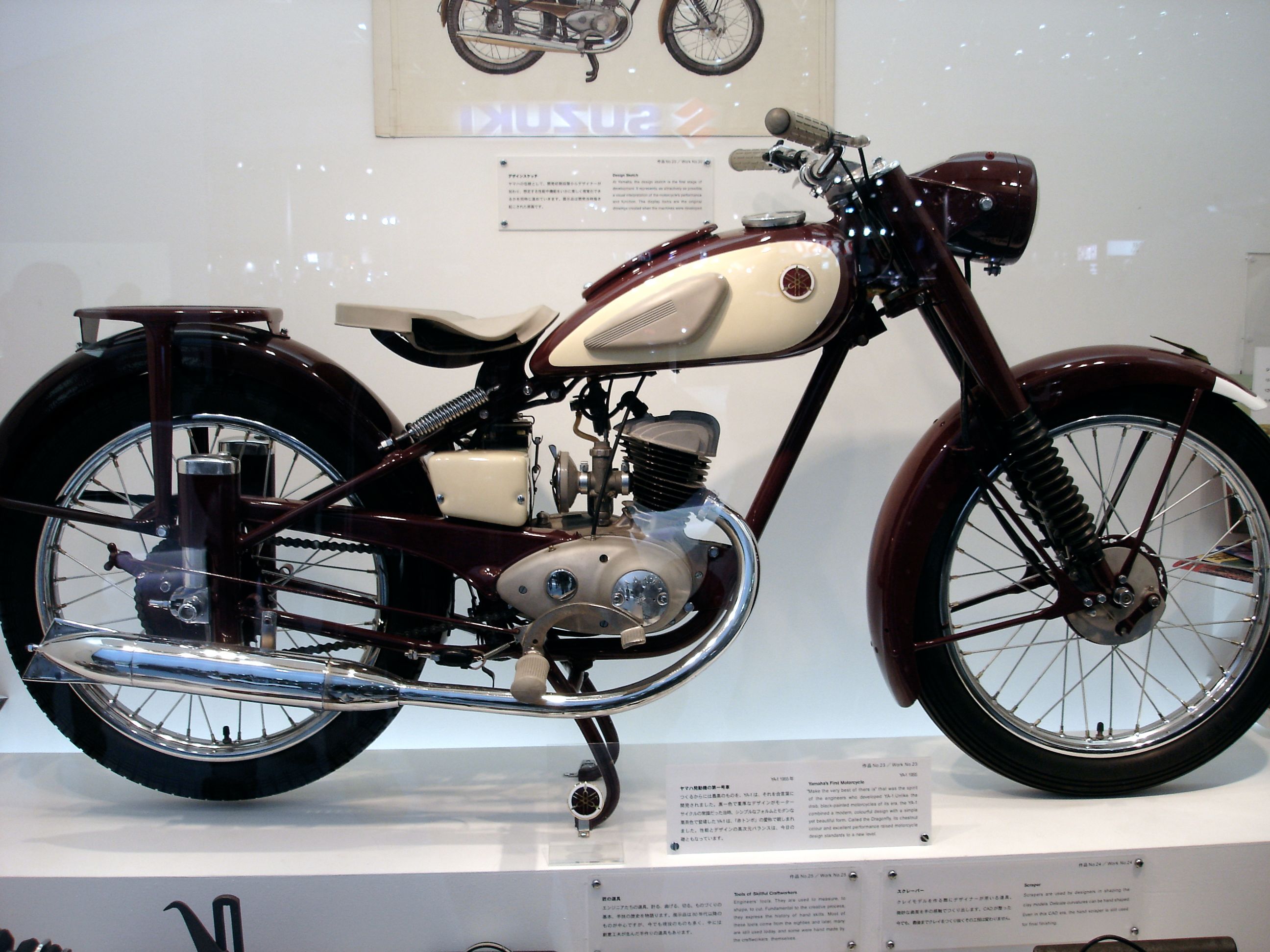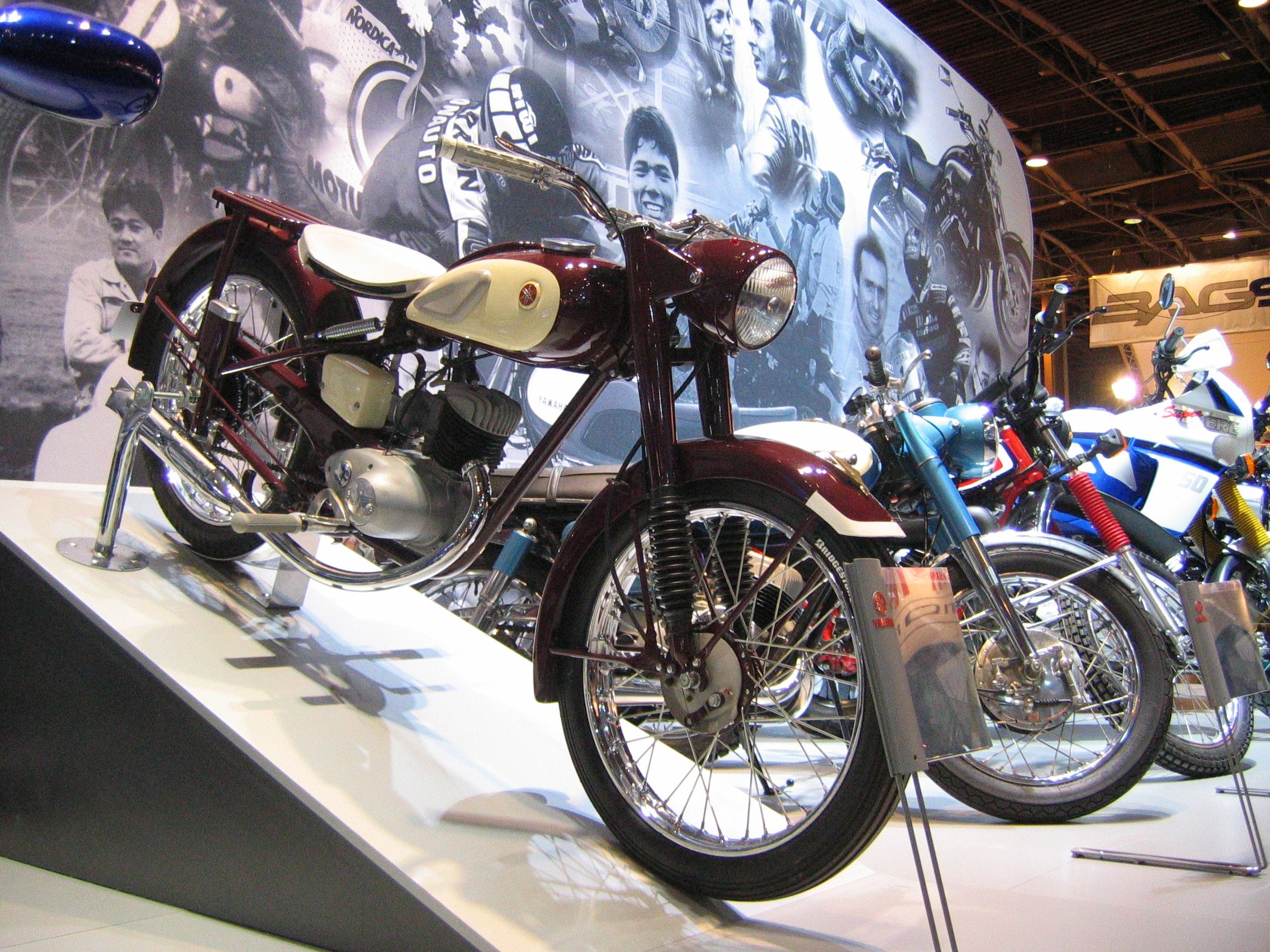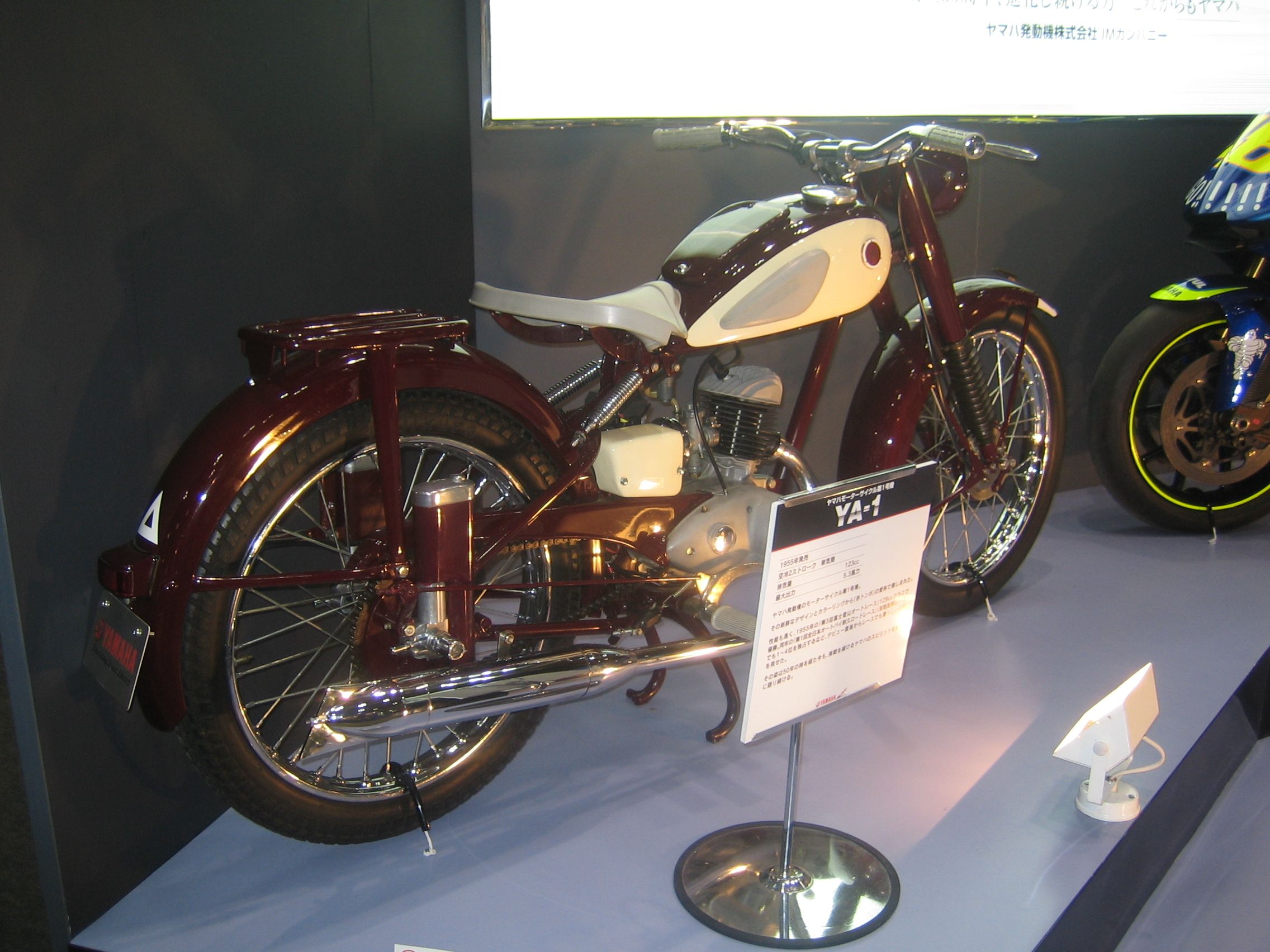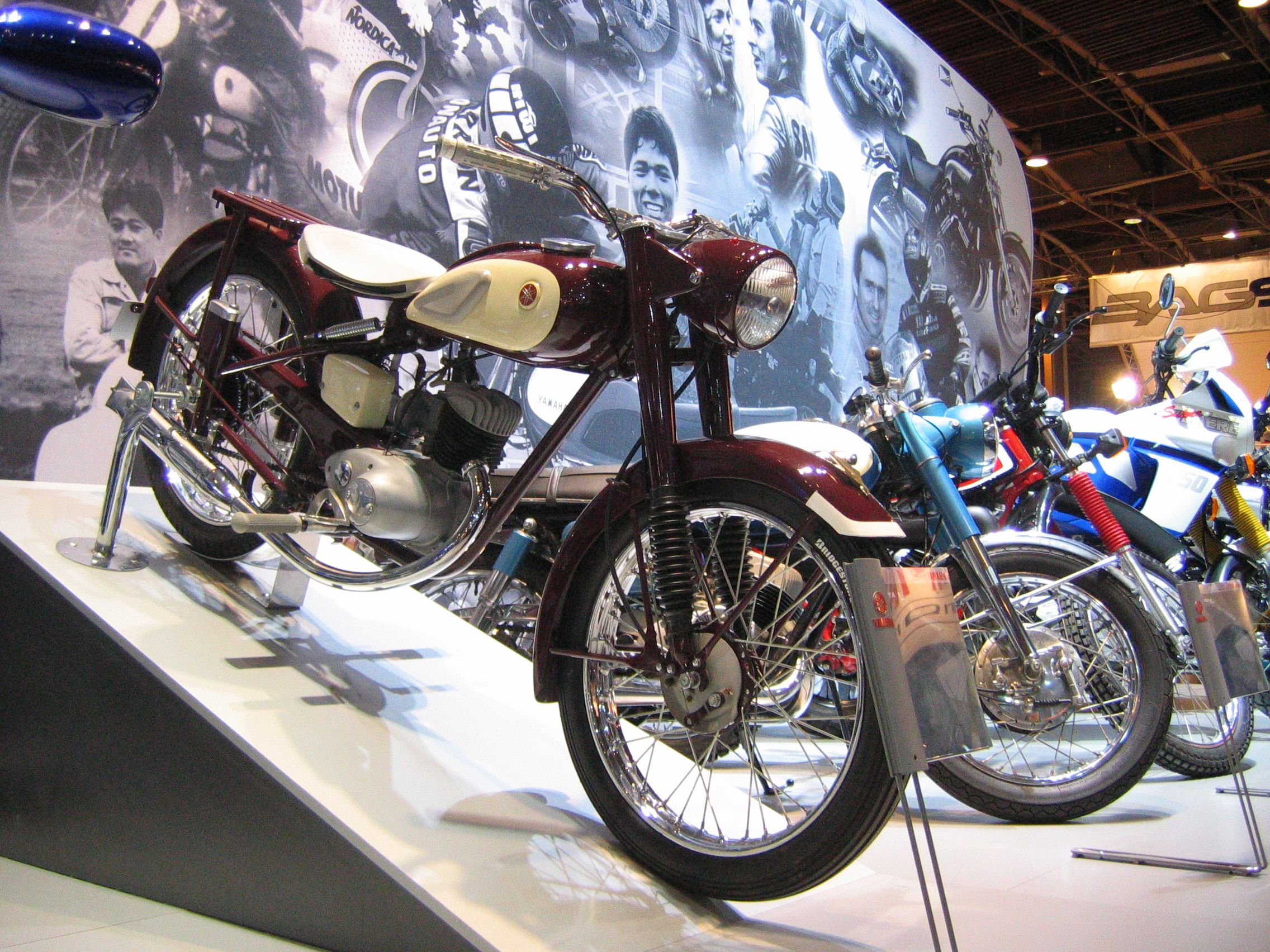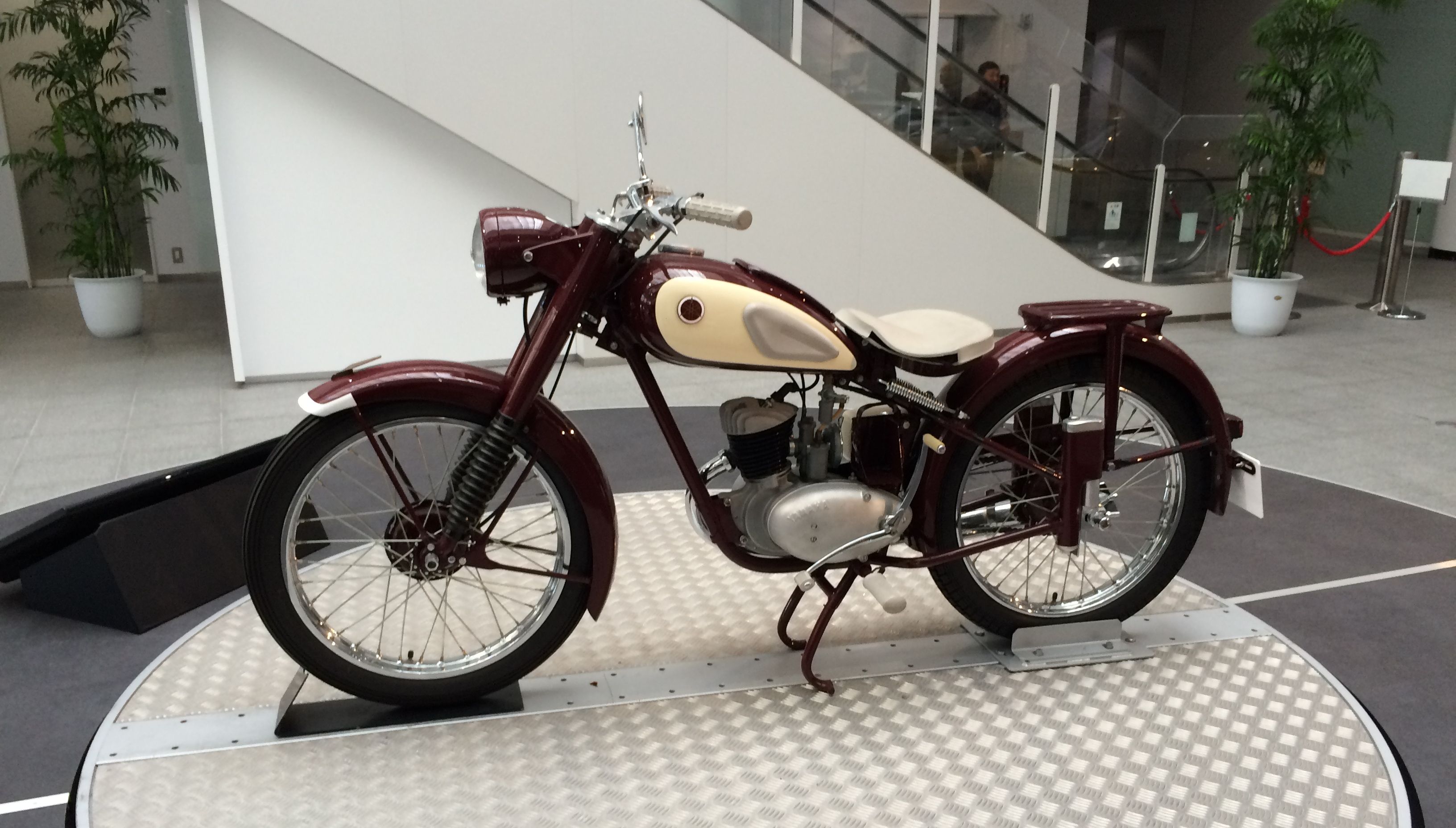Post-War Japan gave rise to the beginnings of the Big Four even as it saw the launch of dozens of other small domestic motorcycle builders, and the Yamaha Motor Company owes its own genesis both to this era and to its first effort, the YA-1. Like so many of its counterparts, the YA-1 was a scant half-step up from the powered bicycles that preceded the motorcycles proper. But, after its success in various domestic racing events it found itself catapulted into the spotlight and into the prominence that would eventually build to the powerhouse of production we know today. The YA-1 was named one of the island nation's 240 landmark automotive technologies by the Society of Automotive Engineers of Japan.
1955 - 1958 Yamaha YA-1
- Make: Array
- Model: 1955 - 1958 Yamaha YA-1
- Engine/Motor: single cylinder
- [do not use] Vehicle Model: Array
Yamaha YA-1 Design
Small and lightweight it may be, but the YA-1 was, indeed, a proper motorcycle, even if it shared some bicycle-like elements. This was far from the marques first success; Yamaha had already made a name for itself around the world through its musical instrument industry before WWII, and had supported the Japanese war effort through the manufacture of naval and aircraft parts during same.
The full-length, strutted, fork foot-mount front fender was one of the bicycle-like components, and it provided full spray containment with cut-down sides that left the front hoop well visible. Black bellow gaiters cover the swept area of the inverted fork's inner tubes, which both protected them and dressed the front end up quite nicely.
Typical for the day, a round cyclops headlight split the night, but this was long before motorcycles were required to carry turn signals, so the headlight and small rectangular taillight were the only illumination to be found. The headlight can doubled as a housing for the round speedometer that represented the only instrumentation on this early machine.
A 2.5 U.S. gallon fuel tank sports a teardrop profile that was rather pleasing to the eye, but probably the most striking design element was the paint package. At a time when most bikes rolled in black, black, or black if you prefer, Yamaha shot the YA-1 in Chestnut Red, earning it the nickname “the Red Dragonfly,” so it stood out from the crowd. It further set itself apart with a cream-colored detail on each side of the fuel tank, and it came complete with knee pads and a red badge that sported the now-iconic, triple tuning-fork design. A cream-colored solo saddle and color-matched luggage rack finishes out the flyline with another full-length, short-side fender out back to complete the machine.
Yamaha YA-1 Chassis
Steel tubing on the YA-1 makes up the single-downtube/single-cradle frame that mimics the geometry of the old rigid structure even though it actually had an undampened coil-spring suspension system out back with both compression and rebounds springs built in.
Up front, the inverted fork stanchions also rely on coil-springs for support and shock absorption with no damping qualities to be had. It wasn't ideal, but it was certainly better than a rigid rear end and girder front end, to be sure. Laced wheels round out the rolling chassis with 19-inch rubber, and mechanical-drum brakes saw to the speed reduction action, because yeah, hydraulic discs had yet to hit the world stage.
|
Front Suspension: |
Coil spring |
|
Rear Suspensions: |
Coil spring |
|
Front Tire: |
2.75-19-2P |
|
Rear Tire: |
2.75-19-4P |
Yamaha YA-1 Drivetrain
The air-cooled thumper was a sidevalve/flathead engine, that like most motorcycle engine of the time, was a two-stroke design that put out more power-per-pound than the four-cycle mills of the time. A 52 mm bore and 58 mm stroke gave it a 123 cc total displacement that was near the upper end of the range for Japanese motorcycle engines of the time. A notable exception is the Rikuo machines that ranged from 747 cc to 1,200 cc, but to be fair it was actually a Harley-Davidson engine.
A carburetor maintained the mix and controlled the induction, and the ignition was a dynamo (magneto) with a points-type breaker that timed the spark.
|
Engine: |
Air-cooled, 2-stroke, single-cylinder |
|
Displacement: |
123 cc |
|
Bore x Stroke: |
52 mm × 58 mm |
|
Maximum power output: |
5.5 hp @ 5,000 rpm |
|
Maximum torque: |
6.9 lb-ft @ 3,300 rpm |
|
Ignition type: |
Dynamo |
|
Transmission: |
Manual 4-speed |
Yamaha YA-1 Pricing
The domestic price when it was a new machine was a steep, 138,000 yen. Since this price was well over ten-times the average starting salary of a university grad (10,000 yen), it was most definitely considered a luxury item.
|
Color: |
Chestnut Red |
|
Price: |
¥138,000 |
Yamaha YA-1 Competitors
Domestic competition for the YA-1 was considerable as there were over 100 motorcycle builders in play at the time, and of course, it had British and American models to contend with, some domestically produced and some imported. Rikuo's Harley-Davidson models made for a relatively large-displacement foe. Honda's D-Type “Dream” was the better part of a decade old, and we were still a few years shy of the super-popular Super Cub that really kicked things off for Honda-san.
He Said
“What an adorable little ride. I absolutely love the look even if the price put it far beyond the means of the average person. It's almost like Japan didn't get the memo that motorcycles were supposed to be affordable basic transportation for the masses. One has to wonder where the Tuning Fork Company might be had they been more for the “everyrider” instead of an elite, well-heeled few.”
She Said
My wife and fellow motorcycle writer, Allyn Hinton, says, “The YA-1 was such a hot number when it was introduced in 1955, it won the third Mt. Fuji Ascent Race that summer, and then made a clean sweep of the top three spots in the ultra-light class of the first Asama Highlands Race later that year. Yamaha established a name early on that held it in good stead with the two-wheeled enthusiasts of the day.”
Yamaha YA-1 Specifications
|
Engine & Drivetrain: |
|
|
Engine: |
Air-cooled, 2-stroke, single-cylinder |
|
Displacement: |
123 cc |
|
Bore x Stroke: |
52 mm × 58 mm |
|
Maximum power output: |
5.5 hp @ 5,000 rpm |
|
Maximum torque: |
6.9 lb-ft @ 3,300 rpm |
|
Ignition type: |
Dynamo |
|
Transmission: |
Manual 4-speed |
|
Chassis: |
|
|
Front Suspension: |
Coil spring |
|
Rear Suspensions: |
Coil spring |
|
Front Tire: |
2.75-19-2P |
|
Rear Tire: |
2.75-19-4P |
|
Dimensions & Capacities: |
|
|
Wheelbase: |
51 in (1,290 mm) |
|
Length: |
77.9 in ( 1,980 mm) |
|
Width: |
26 in (660 mm) |
|
Height: |
36.4 in (925 mm) |
|
Weight: |
207.2 lbs (94kg) |
|
Fuel capacity: |
2.5 US gal ( 9.5 L) |
|
Details: |
|
|
Color: |
Chestnut Red |
|
Price: |
¥138,000 |
Further Reading
Yamaha
Read more Yamaha news.

